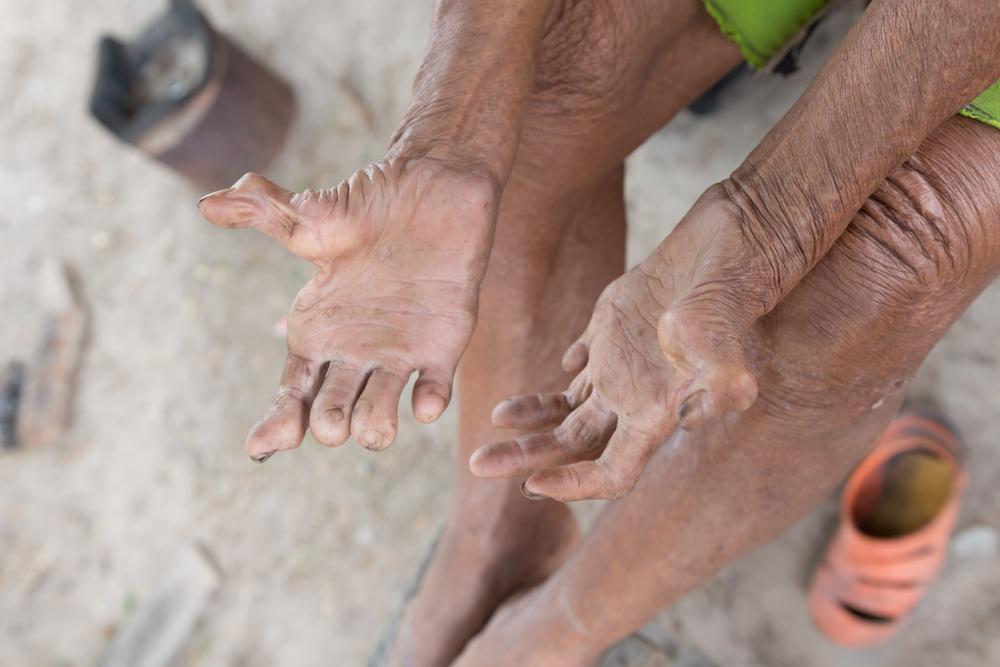Often Suspected of Panu, White spots on the skin can be a sign of leprosy
White spots on the skin are often regarded as tinea versicolor and are underestimated by most people. In fact, it could be that white spots on the skin are not tinea versicolor, but rather a feature of leprosy. If left unchecked, this skin disease can cause blindness to disability. Find out what are the characteristics of leprosy or the initial symptoms so that the disease can be treated as early as possible.

What is the difference between tinea versicolor and leprosy?
Leprosy or also known as leprosy Hansen disease is a disease that attacks the skin, peripheral nervous system, mucous membranes in the upper respiratory tract, and eyes.
The nervous system that is attacked can cause a person who has this disease to numb (numbness). Leprosy is caused by the bacterium Mycobacterium leprae which takes 6 months to 40 years to develop in the body. The characteristics of leprosy can occur after bacteria infect the body of people who have leprosy for two to ten years.
Why do people often think that leprosy is just tinea versicolor? Because these two skin diseases both cause white patches on the skin. The difference is, someone who has tinea versicolor will feel itching and redness on the edges of the spot. Meanwhile, leprosy will not feel itchy, just numb.
What are the characteristics of leprosy?
Leprosy consists of two types, namely dry leprosy or basiler pausi (PB) and wet or multi bacillary leprosy (MB). Symptoms of white spots like tinea versicolor are usually a characteristic of dry leprosy. While the characteristics of wet leprosy are more like ringworm, namely reddish patches and thickening of the skin.
The most basic feature of leprosy is lack of feeling (hypoesthesia) or numbness at all (anesthesia) in the symptoms that appear. This causes lepers if left unchecked to experience disability because their nerves are damaged so they do not feel pain even if their fingers break.
Although it used to be a feared disease, leprosy is currently a disease that is easy to treat. Ironically, to date some regions in Indonesia are still considered as leprosy endemic areas by the World Health Organization or WHO. Then, what kind of symptoms or characteristics of leprosy should you watch out for?
- Numbness, can not feel the temperature change to lose the sensation of touch and pain in the skin.
- Joint pain.
- Weight loss.
- Enlargement of peripheral nerves, usually around the elbows and knees.
- Changes in shape on the face.
- Blisters or rashes.
- A boil appears but does not hurt.
- Hair loss.
- Nasal congestion or nosebleeds occur.
- A wound appears but does not hurt.
- Eye damage. The eyes become dry and rarely wink are usually felt before large-sized ulcers appear.
- Weak muscles or paralysis.
- The loss of fingers.
How is leprosy treated?
People who have been diagnosed with leprosy will usually be given a combination of antibiotics as a treatment step for six months to two years. Treatment of leprosy itself must be based on the type of leprosy to determine the type, dose of antibiotics, and duration of treatment.
Surgery is generally performed as an advanced process after antibiotic treatment. The purpose of surgical procedures for lepers is:
- Normalize damaged nerve function
- Improve the body shape of a disabled person
- Restore limb function
The risk of leprosy complications can occur depending on how quickly the disease is diagnosed and treated effectively. Some complications that may occur if leprosy is late treated are:
Permanent nerve damage
Muscle weakens
Progressive disability. Examples are loss of eyebrows, defects in the toes, hands and nose